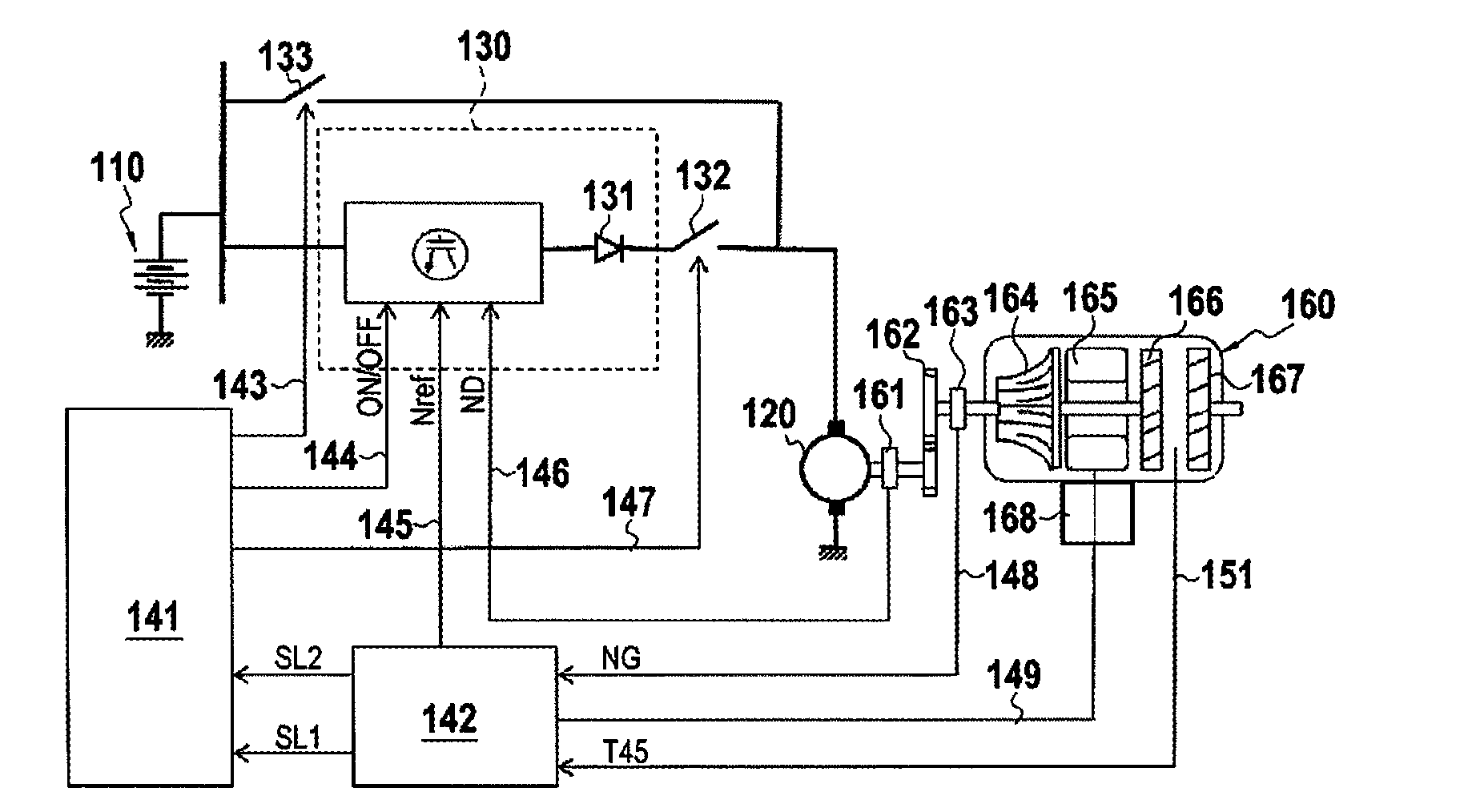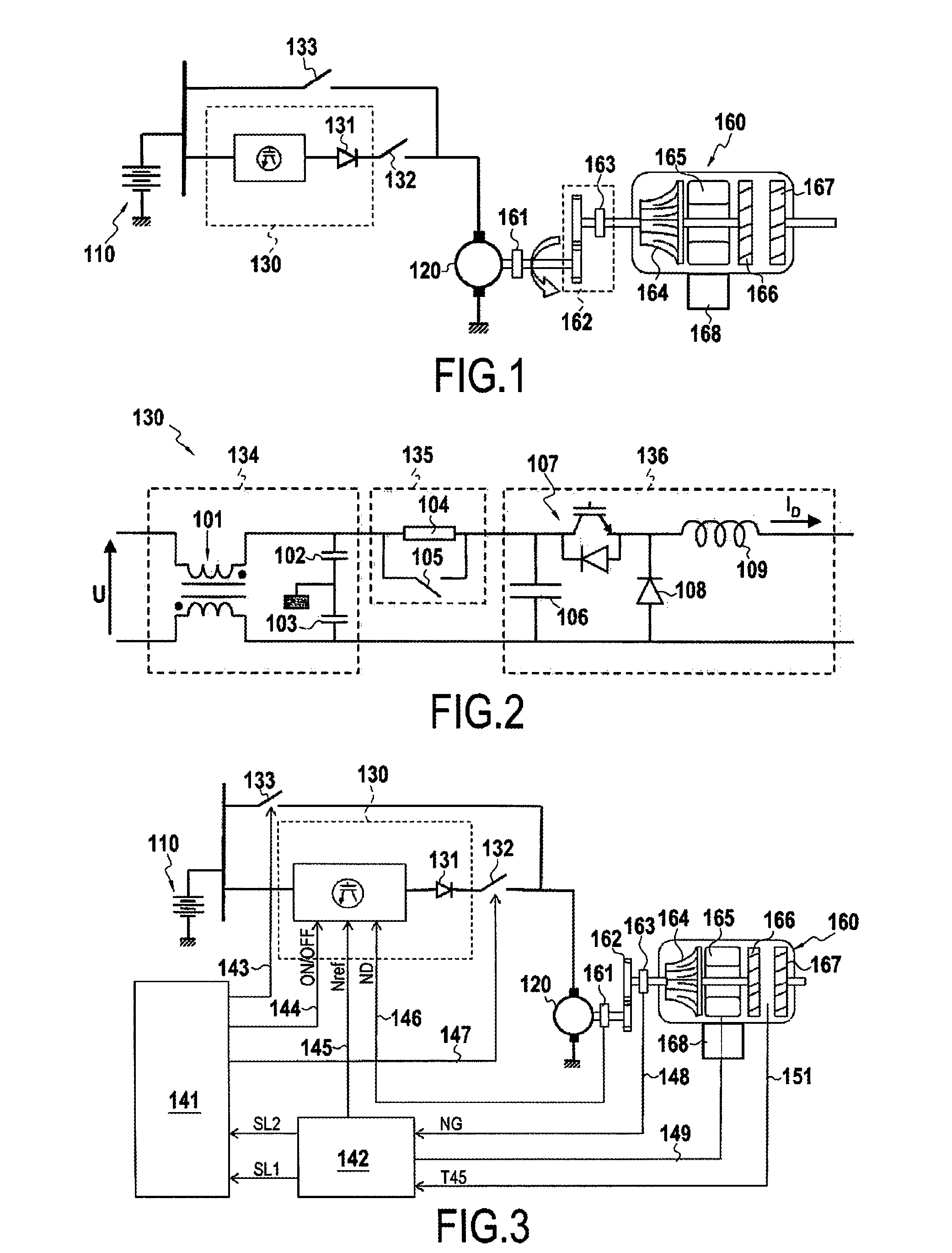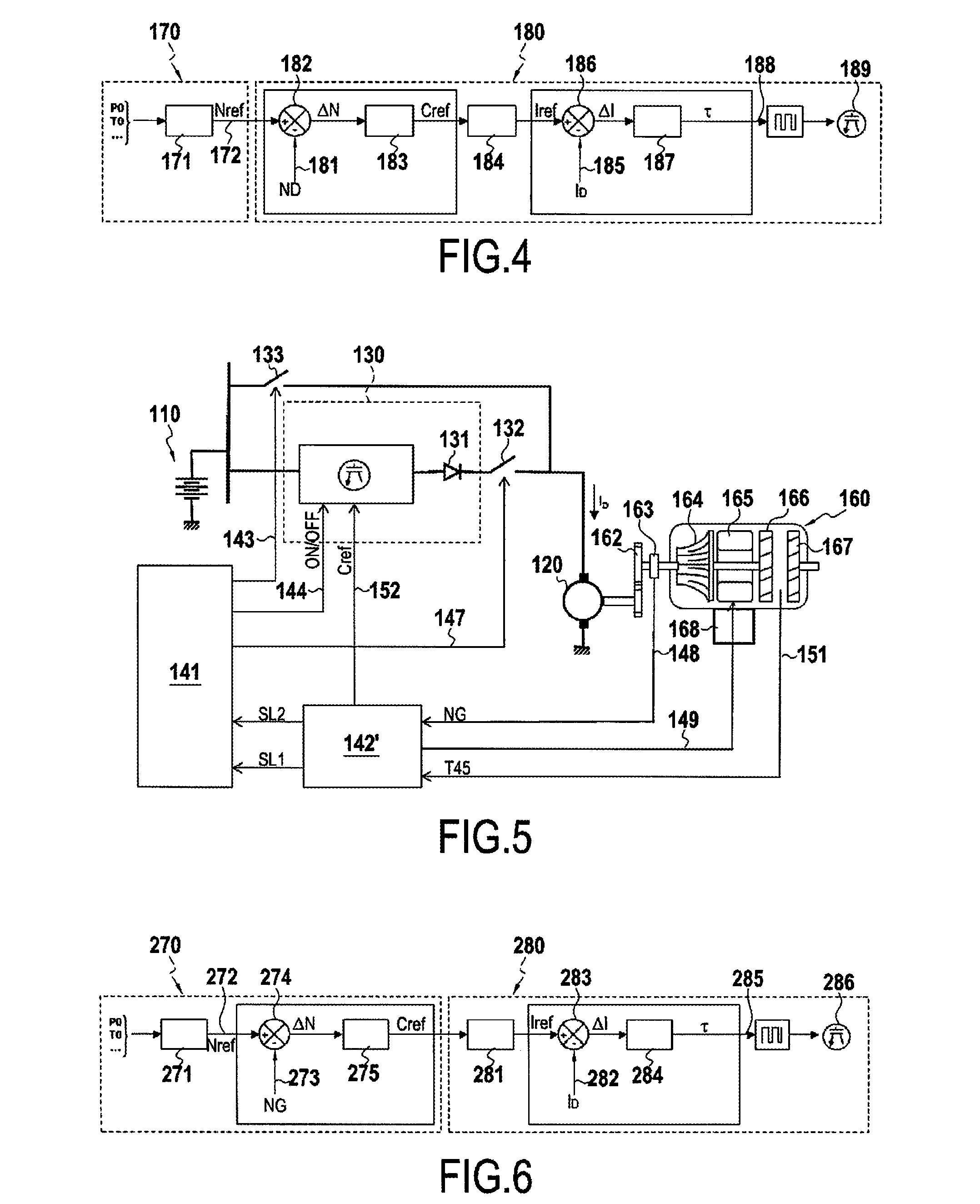Method and a system for reliably starting a turbine engine
a turbine engine and reliable technology, applied in the direction of engine starters, turbine/propulsion engine ignition, machines/engines, etc., can solve the problems of gas generators that accelerate fast, the practicability of implementation is not easy, and the ignition window passes too quickly
- Summary
- Abstract
- Description
- Claims
- Application Information
AI Technical Summary
Benefits of technology
Problems solved by technology
Method used
Image
Examples
Embodiment Construction
[0087]FIG. 1 is a diagram showing the general configuration of a device of the invention.
[0088]The reliable starter system for a turbine engine comprises a storage battery 110 that may be a single battery or a group of batteries and that may be constituted by the power supply from an on-board network of an aircraft, e.g. 28 V, but the invention is not limited to this voltage.
[0089]A DC starter 120 may be constituted by a simple DC starter or by a starter generator (SG) capable of operating not only in motor mode, but also in generator mode once the starting stage has terminated, e.g. in order to power an on-board network. In the description below, the term “starter” is used to cover both a starter only and / or a starter-generator, unless specified to the contrary.
[0090]The turbine engine starter system includes a transmission gearbox 162 including in particular stepdown gearing for transmitting motion from the starter 120 to the main axis of the engine, and also including auxiliary e...
PUM
 Login to View More
Login to View More Abstract
Description
Claims
Application Information
 Login to View More
Login to View More - R&D
- Intellectual Property
- Life Sciences
- Materials
- Tech Scout
- Unparalleled Data Quality
- Higher Quality Content
- 60% Fewer Hallucinations
Browse by: Latest US Patents, China's latest patents, Technical Efficacy Thesaurus, Application Domain, Technology Topic, Popular Technical Reports.
© 2025 PatSnap. All rights reserved.Legal|Privacy policy|Modern Slavery Act Transparency Statement|Sitemap|About US| Contact US: help@patsnap.com



